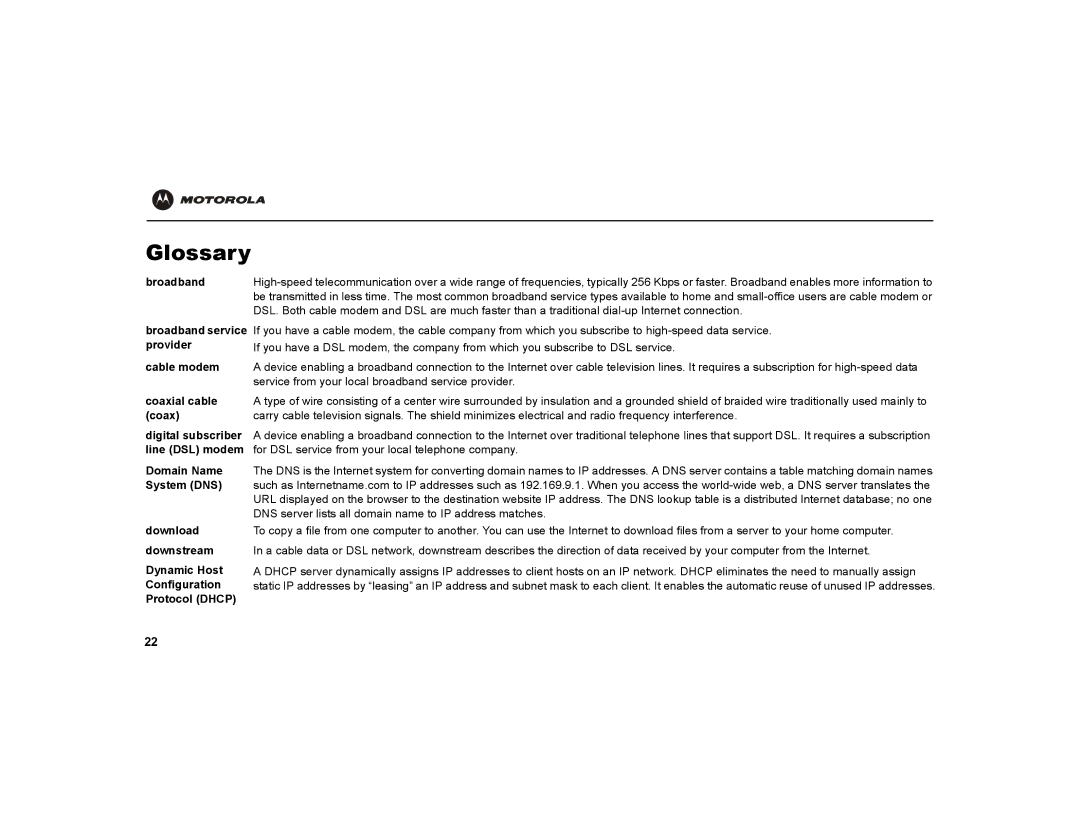Glossary
broadband | |
| be transmitted in less time. The most common broadband service types available to home and |
| DSL. Both cable modem and DSL are much faster than a traditional |
broadband service provider
cable modem
If you have a cable modem, the cable company from which you subscribe to
A device enabling a broadband connection to the Internet over cable television lines. It requires a subscription for
coaxial cable | A type of wire consisting of a center wire surrounded by insulation and a grounded shield of braided wire traditionally used mainly to |
(coax) | carry cable television signals. The shield minimizes electrical and radio frequency interference. |
digital subscriber A device enabling a broadband connection to the Internet over traditional telephone lines that support DSL. It requires a subscription line (DSL) modem for DSL service from your local telephone company.
Domain Name The DNS is the Internet system for converting domain names to IP addresses. A DNS server contains a table matching domain names
System (DNS) such as Internetname.com to IP addresses such as 192.169.9.1. When you access the
download downstream
Dynamic Host Configuration Protocol (DHCP)
To copy a file from one computer to another. You can use the Internet to download files from a server to your home computer. In a cable data or DSL network, downstream describes the direction of data received by your computer from the Internet.
A DHCP server dynamically assigns IP addresses to client hosts on an IP network. DHCP eliminates the need to manually assign static IP addresses by “leasing” an IP address and subnet mask to each client. It enables the automatic reuse of unused IP addresses.
22
